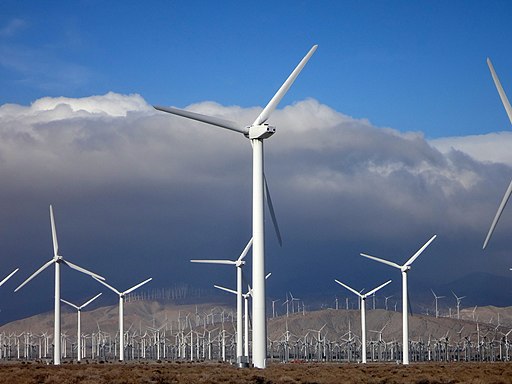In the global battle to rein in greenhouse gas emissions and prevent disasters, most economists agree that a carbon price is a key tool in the toolbox. A carbon price brings the costs of climate impacts into everyday economic decisions and changes the relative cost of high-carbon and low-carbon goods. A carbon price provides incentives for businesses and consumers to shift to existing lower-carbon options like wind and solar power, as well as develop and deploy new low-carbon technologies, processes and business models.
But what’s less commonly discussed are what policies are needed in addition to a carbon price. As a new WRI issue brief highlights, a carbon price is not a silver bullet.
The Need for Complementary Policies Along with a Carbon Price
While pricing carbon brings the costs of climate change into economic decisions, it alone cannot overcome other market barriers that limit the uptake of clean energy and other low-carbon technologies in some sectors, such as high up-front costs, mismatches between who pays for equipment (the landlord) and who pays energy bills (the tenant), and capital constraints. A carbon price alone is also unlikely to provide incentives for investment in high-cost technologies when increasing deployment could help lower their cost, as has happened with wind and solar. Finding ways to lower the cost of low-carbon options can open the door for greater emissions reductions in the long-term. Aiming to prevent the worst climate impacts by keeping global temperature rise to 1.5 degrees C (2.7 degrees F) will require not just a carbon price, but also complementary policies that address market barriers and reduce the costs of the emissions reductions that will be needed in 10 or 20 years.
Looking to Long-term Emissions Reductions: Examples from the Electricity Sector
The electricity sector is the part of the economy most responsive to a carbon price. System operators regularly turn generation on and off based on operating costs to balance supply and demand. By changing operating costs based on a fuel’s CO2 emissions, a carbon price can have an immediate effect on what resources are dispatched, significantly reducing emissions.
Nonetheless, a carbon price alone is not sufficient even in the electricity sector. As wind, solar and other zero-emission generation become widespread, more flexible market and grid operations, as well as enabling technologies such as energy storage, will be increasingly needed. Decarbonizing electricity will require a variety of federal, regional, state and local policies and programs to complement a carbon price, such as:
- Deploying significant energy storage and improving long-term storage options;
- Improving transmission between regions with renewable resources and those with high electric demand;
- Facilitating the development and deployment of smart grids;
- Supporting research, development and deployment (RD&D) for carbon capture, utilization and storage while addressing relevant environmental concerns;
- Supporting continued operation of existing nuclear power plants that meet environmental and public health safeguards;
- Supporting research and development for producing hydrogen and other fuels from electricity; and
- Improving wholesale market design to make it easier to integrate storage and flexible demand into the electric grid.
The need for complementary policies is not unique to electricity. For example, decarbonizing passenger transportation will require investment in electric vehicles and charging infrastructure to ensure that options are available for deep reductions in the future. Well-designed vehicle emission standards or fuel standards can help drive that investment, even if those policies are more expensive today than abatement options in other sectors. The tools to decarbonize transport and other hard-to-abate sectors need to be put in place soon to reduce the cost of deep reductions in the decades ahead. A carbon price alone is unlikely to provide sufficient incentives for deployment of these options. WRI’s issue brief also discusses similar issues that arise in passenger transportation and industry, and barriers that exist more broadly across the economy.
How to Evaluate the Best Policies to Complement a Carbon Price?
Policies and programs to complement a carbon price should be evaluated on their potential to minimize the costs of achieving long-term emission targets, and not only on their near-term cost effectiveness. Many of the approaches above are not the lowest-cost emissions reductions today, but are likely needed to drive electric sector emissions down to zero. For example, most evaluations of what it would take to increase renewable generation suggest that costs increase quickly as you approach 100% wind and solar, in large part because of seasonal variations. Development of cost-effective seasonal energy storage would allow excess solar electricity generated in the spring to be stored for use in fall and winter. This could ease the path to zero-emission electricity. Similarly, carbon capture is not the cheapest approach for emissions reductions today, but may be critical in the decades ahead for storing carbon captured from the atmosphere or with natural gas power generation to help integrate renewables.
Creating the Right Policies to Achieve the Goals of the Paris Agreement
The aim of the Paris Agreement on climate change is to significantly reduce the risks and impacts of climate change by keeping global temperature rise well below 2 degrees C (3.6 degrees F), with efforts to limit warming to 1.5 degrees C (2.7 degrees F). Achieving this goal will require innovation and experimentation in policy design, implementation and evaluation. A broad policy portfolio involving both a carbon price and complementary policies and programs that address market barriers is likely to be the best long-term, least-cost approach. This combination can drive low-cost emissions reductions today while supporting innovation and deployment of new and emerging approaches for deep emissions reductions in the long-term.



